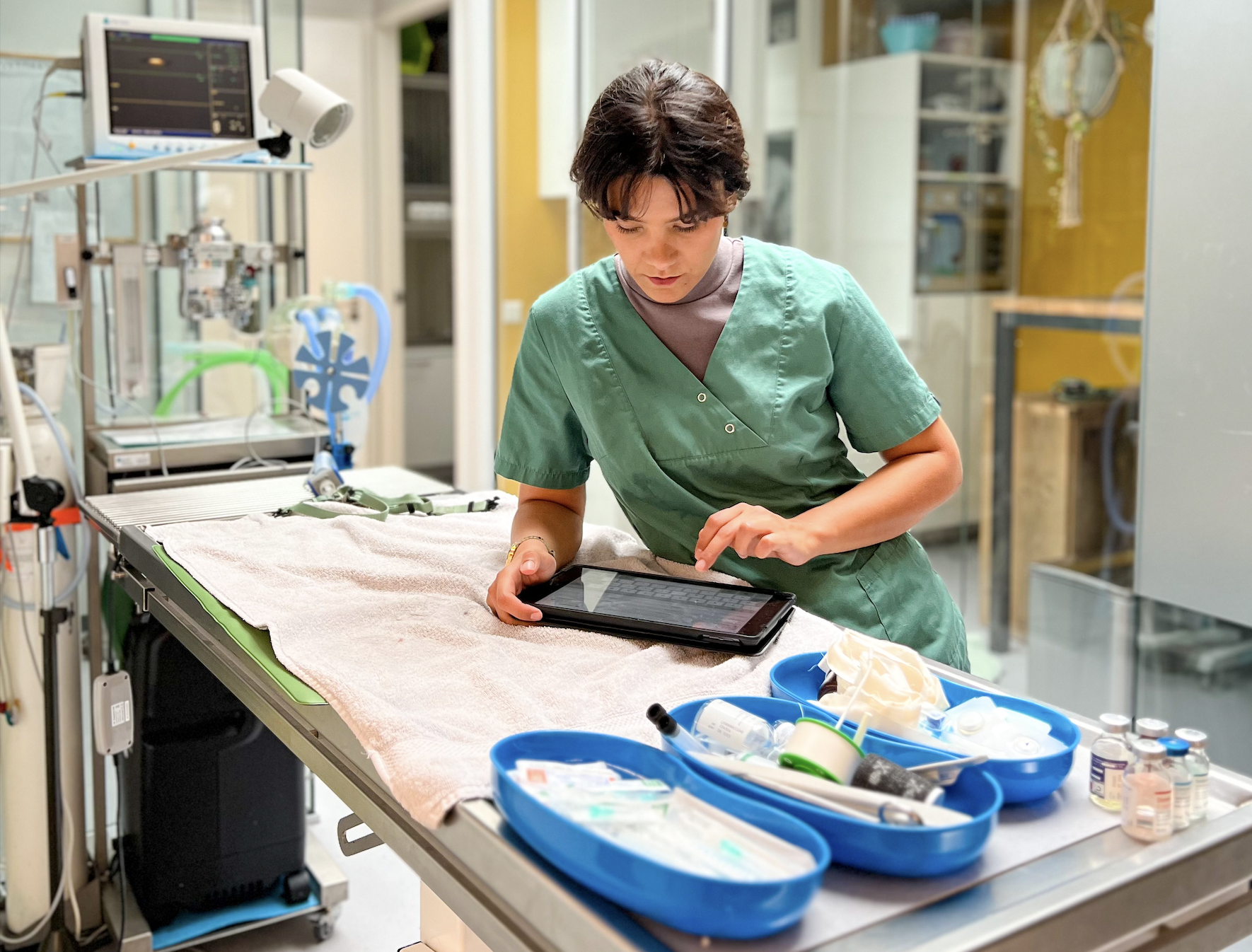Sterile Surgery Room
Like any operating room, our surgical space is sterile. This means that animals are only brought in after being shaved and washed for the procedure. Additionally, staff are only allowed to enter once they are wearing a hairnet and face mask.
Dental treatments (which involve a significant amount of bacteria being released into the air from the mouth) are not performed in the operating room but in a dedicated dental room. Because we work in such a sterile environment, there is no need to routinely administer antibiotics after every surgery.


Anesthesia
Anaesthesia, for any animal, always carries some level of risk. Before performing surgery, we will thoroughly examine your pet, discuss the risks with you, and minimize them as much as possible (for example, by conducting blood tests beforehand, which helps us determine the best anaesthetic agents to use). We work with the safest anaesthetic agents and use both injectable and gas anaesthesia. Each animal receives anaesthesia that is tailored to their specific needs.
Monitoring
Every patient is closely monitored with us. In addition to a well-trained assistant, we have access to heart and respiratory monitoring (such as ECG and capnograph). This allows us to continuously observe your pet's condition during the surgery on the monitors, and intervene as quickly as needed if necessary. We intubate your pet so that we can provide adequate oxygen and, if needed, gas anesthesia during the operation. Additionally, we ensure that your pet stays warm during and after the surgery to prevent cooling. If necessary, we support your pet with intravenous therapy.
After Surgery
Once the surgery is successful, it is crucial that your pet wakes up properly. The monitoring during this "recovery" phase is just as important as during the surgery! We ensure that your pet can wake up in a spacious, warm recovery area and we regularly check their temperature, breathing, and heart rate. Only when the animals are fully awake and stable are they allowed to go home with us.
Hospitalization
If it is a major surgery or if the aftercare is critical, we may decide to keep your pet in the recovery area for a few more days after the surgery. This ensures the best possible recovery and allows us to monitor their condition closely during the critical healing period. Here you can read more about what a hospitalization involves.

